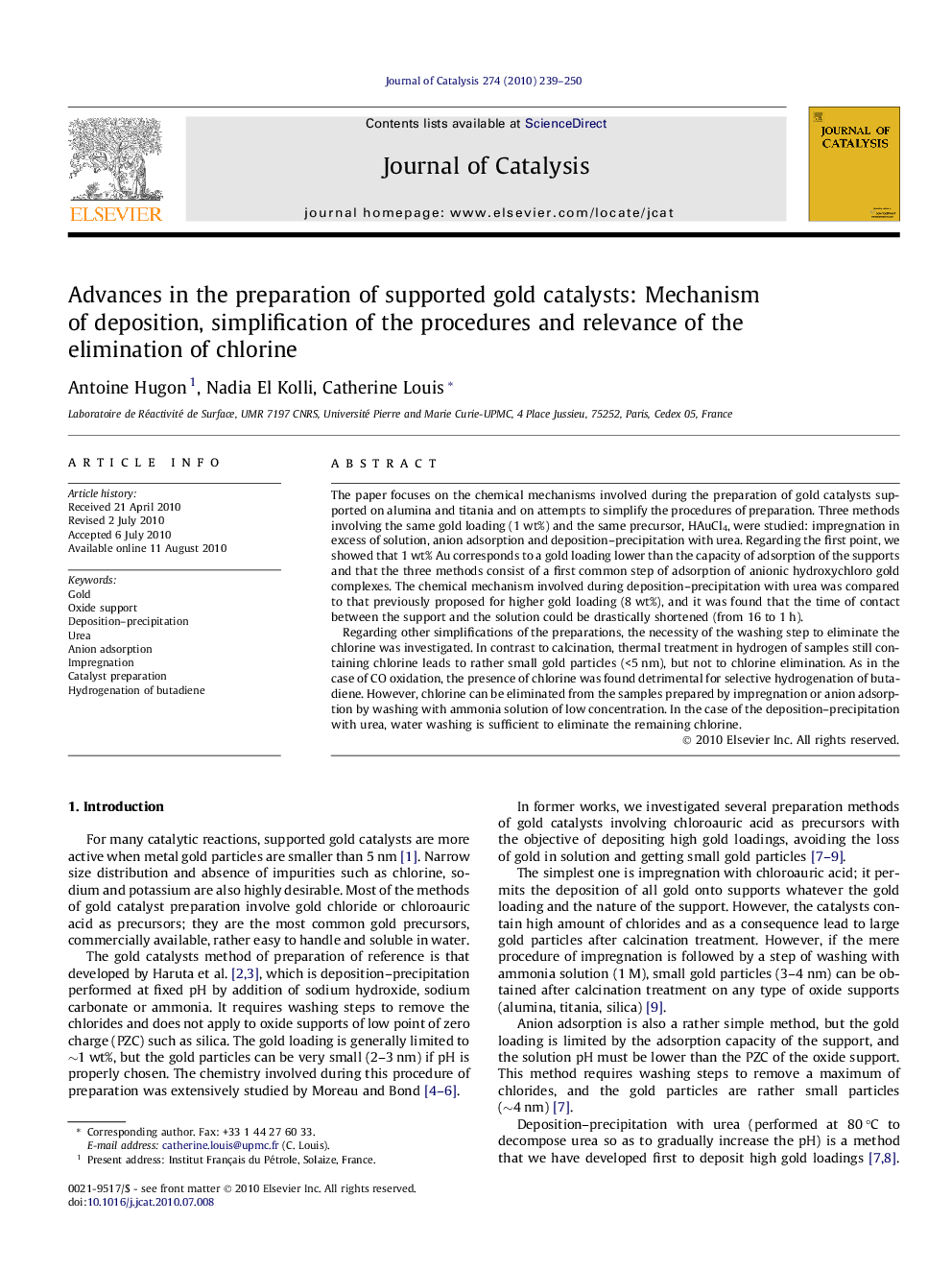| Article ID | Journal | Published Year | Pages | File Type |
|---|---|---|---|---|
| 61882 | Journal of Catalysis | 2010 | 12 Pages |
The paper focuses on the chemical mechanisms involved during the preparation of gold catalysts supported on alumina and titania and on attempts to simplify the procedures of preparation. Three methods involving the same gold loading (1 wt%) and the same precursor, HAuCl4, were studied: impregnation in excess of solution, anion adsorption and deposition–precipitation with urea. Regarding the first point, we showed that 1 wt% Au corresponds to a gold loading lower than the capacity of adsorption of the supports and that the three methods consist of a first common step of adsorption of anionic hydroxychloro gold complexes. The chemical mechanism involved during deposition–precipitation with urea was compared to that previously proposed for higher gold loading (8 wt%), and it was found that the time of contact between the support and the solution could be drastically shortened (from 16 to 1 h).Regarding other simplifications of the preparations, the necessity of the washing step to eliminate the chlorine was investigated. In contrast to calcination, thermal treatment in hydrogen of samples still containing chlorine leads to rather small gold particles (<5 nm), but not to chlorine elimination. As in the case of CO oxidation, the presence of chlorine was found detrimental for selective hydrogenation of butadiene. However, chlorine can be eliminated from the samples prepared by impregnation or anion adsorption by washing with ammonia solution of low concentration. In the case of the deposition–precipitation with urea, water washing is sufficient to eliminate the remaining chlorine.
Graphical abstractGold catalyst preparation by impregnation, anion adsorption and deposition–precipitation with urea: how to get small gold particles and no residual chlorine.Figure optionsDownload full-size imageDownload high-quality image (74 K)Download as PowerPoint slide
